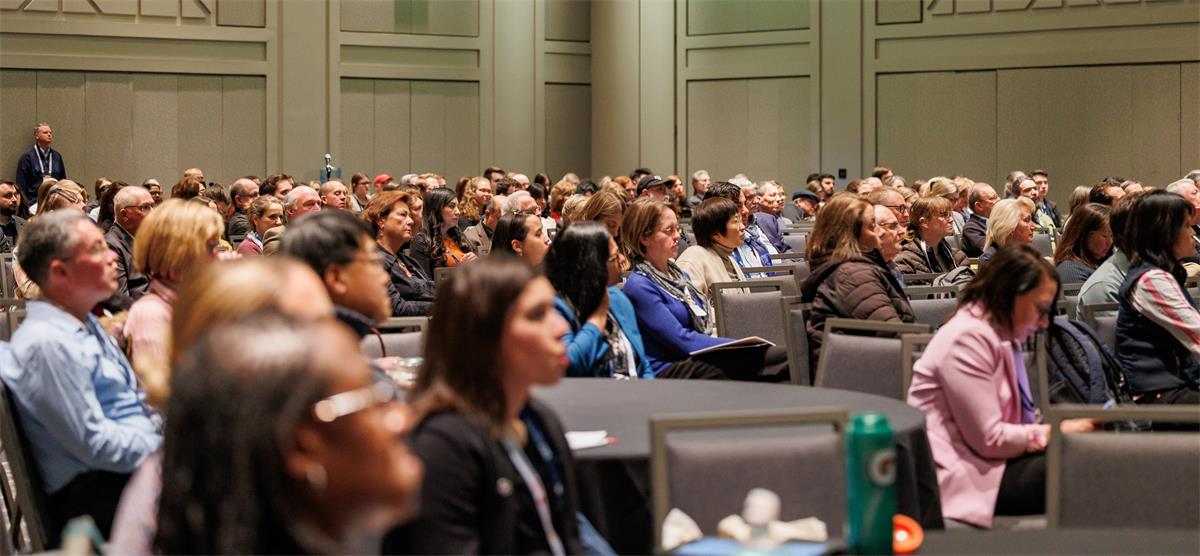
It was Tuesday afternoon in Salt Lake City. The expansive room of the Salt Palace Convention Center buzzed with conversations between colleagues new and old as attendees poured in by the dozens to hear the 2024 Merit Award Lecture given by David Eaton, PhD, ATS, DABT, Professor Emeritus at University of Washington and this year’s recipient of the SOT Merit Award.

Attendees settled into their seats as SOT President Dori Germolec, PhD, took the stage to introduce Dr. Eaton. She outlined the goal of the Merit Award, which is to recognize an individual’s contributions to toxicology throughout an entire career. Dr. Eaton’s storied career includes serving as the 2001–2002 SOT President, as well as Founding Director for an NIEHS Core Center of Excellence, Director and Treasurer of the American Board of Toxicology, and board member and Vice President for the Toxicology Education Foundation, among other appointments, and over 190 scientific articles, book chapters, and other publications. There was a good-natured chuckle from the crowd as Dr. Eaton took the stage and joked about the lengthy list of accomplishments.
Within the first few slides, characters such as Superman, Barbie, and Hank Hill had already made an appearance in Dr. Eaton’s slides as he discussed the evolutionary basis of genetic diversity, not only among individuals within a species, but among species such as mice, rats, and humans. From there, Dr. Eaton delved into his and his colleagues’ discoveries on the mechanisms of Aflatoxin B1 hepatocarcinogenicity throughout the past 40+ years, keeping the discussion jovial and light with the help of Word Art, slide animations, and an obvious zeal for scientific inquiry. Upon arriving at the results of microphysiological system (organ-on-a-chip) validation studies using aristolochic acid, Dr. Eaton had the commentary “YAY!!” on his slides in all caps, which elicited a smattering of smiles from attendees. Several times throughout the lecture, Dr. Eaton acknowledged the work of his grad students and other colleagues and collaborators in these many discoveries.

The final portion of Dr. Eaton’s lecture described a couple endeavors in his retirement, including risk assessment work related to the mechanisms of carcinogenicity by NDMA and AhR activation by dioxin and other PAHs. As Dr. Eaton reminded the audience of the O6-methylguanine DNA adduct repair pathway, this reporter was struck by a feeling of being back in graduate school learning about several classic examples of toxicity mechanisms; except this time, the twist was that the lecturer had contributed to the discoveries of them all.
Dr. Eaton closed in acknowledgement of many colleagues over the decades, and the energized audience applauded the lecture. Attendees rose to congratulate Dr. Eaton one-on-one, confer with each other on dinner plans, and hustle off to the next session in search of other engaging talks.
This blog reports on the Merit Award Lecture titled “Are Humans REALLY Just Big Rats and Mice? A Tale of Three ‘Toxins’” that was held during the 2024 SOT Annual Meeting and ToxExpo. An on-demand recording of this session is available for meeting registrants on the SOT Online Planner and SOT Event App.
This blog was prepared by an SOT Reporter and represents the views of the author. SOT Reporters are SOT members who volunteer to write about sessions and events in which they participate during the SOT Annual Meeting and ToxExpo. SOT does not propose or endorse any position by posting this article. If you are interested in participating in the SOT Reporter program in the future, please email SOT Headquarters.
#Communique:AnnualMeeting
#2024AnnualMeeting